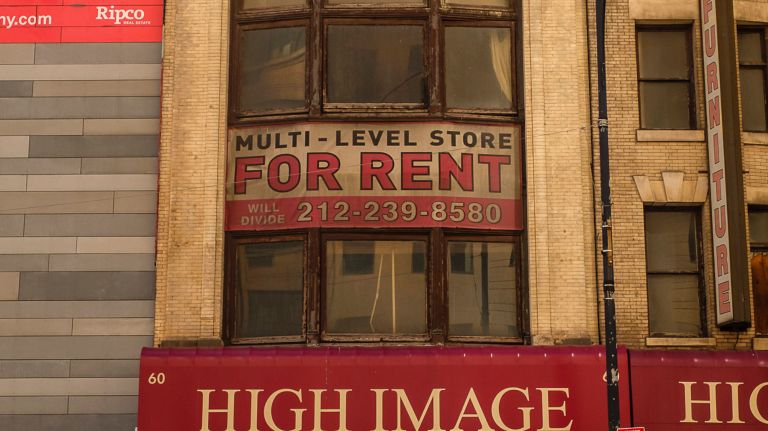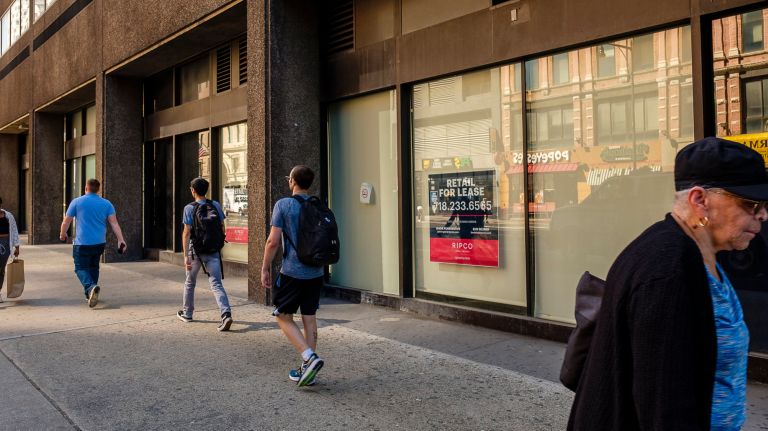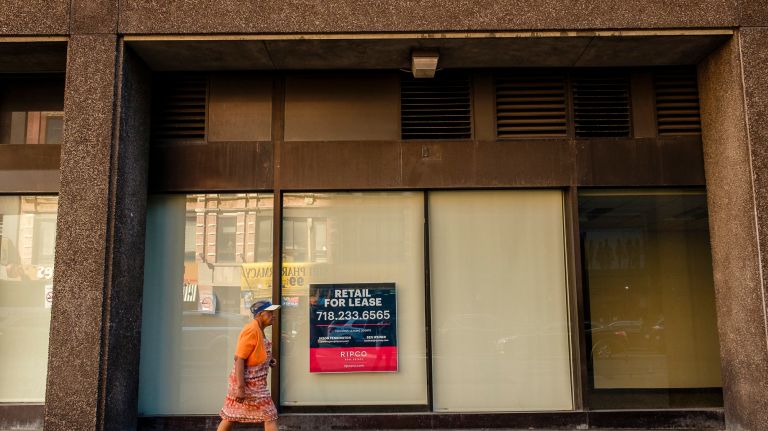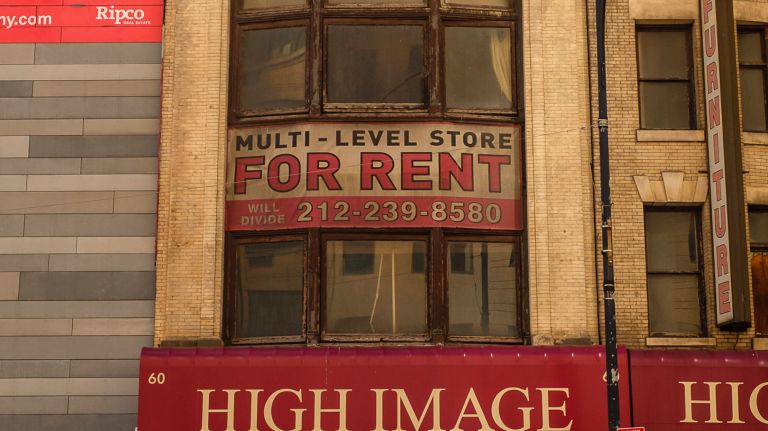
The city is seeing more shuttered storefronts, according to a report released Wednesday by the city comptroller’s office — and business leaders and experts alike say it could get worse if the city doesn’t take action to alleviate high rents and online competition.
The citywide commercial vacancy rate jumped by 45% between 2007 and 2017, going from 4% to 5.8%, with an increase of 5.2 million square-feet of empty retail space, according to Comptroller Scott Stringer’s report.
Not surprisingly, the rise in e-commerce sites has eaten away at the profitability of both mom-and-pop shops and chain stores. As a result, business owners aren’t able to combat rising taxes, rents and other costs, according to the comptroller’s analysis of data from several city agencies and private partners.
Stringer said the empty storefronts’ drawbacks go beyond cosmetic complaints about the cityscape and include millions in lost opportunities and city revenue.

"Local communities feel vacancies every day," Stringer said.
Even though the report only included data through 2017, Stringer said he has fielded anecdotal evidence that the local retail market hasn’t gotten better over the last two years.
All five boroughs’ vacancy rates jumped during the study’s 10-year period, with Staten Island seeing the greatest increase, from 4.3% to 11%. Brooklyn’s vacancy rate went from 4.3% to 5.1%, according to the report.
The average retail rent citywide jumped from $42 per square-foot to $51 per square-foot during the decade in question. Several Manhattan neighborhoods, including Midtown East and the Upper West Side, now have an average retail rent of over $100 per square-foot, the report said.
Although Manhattan’s 2017 vacancy rate of 5.2% was below the city average, many of the borough’s business owners are struggling to keep afloat, according to Jessica Walker, the president of the Manhattan Chamber of Commerce. She attributed their growing financial burdens to taxes, higher minimum wages and other new employer obligations.

"When you talk to our members, there is a general feeling across the board that New York City is a difficult and costly place to do business," Walker said.
The number of retail stores in the city increased 19% from 2006 to 2017. During that period, the number of service stores such as gyms, barbershops and nail salons grew by 50%, and the ranks of restaurants and bars rose 65%.
However, some retail sectors did not fare as well, according to MasterCard purchase data suggesting the number of clothing merchants fell 7% and the number of general merchandise merchants dropped 12% between 2012 and 2018, the report said.
Online retailers cannot compete with the eateries and other service establishments that can still afford current rent rates, according to Jonathan Bowles, the executive director of the economic think tank Center for an Urban Future.
"Food retailers are still willing to pay the real estate prices today, but merchandise retailers aren’t willing to do the same," Bowles said. "That’s the key issue here."
Bowles noted the loses are not limited to mom-and-pops, given that major chains like Macy’s and Kmart have scaled back their footprints in the city.
Stringer acknowledged that the vacancies aren’t likely to decrease in the near future as online shopping remains common, but argued the city could do more to keep brick and mortars afloat. The report recommended that the city provide tax benefits to merchandise retailers in neighborhoods with high commercial vacancies and waive fees for permits and inspections.
Stringer said he has received several reports of new businesses waiting weeks or even months for the permits they need to renovate and make their debuts.
"Navigating this regulatory environment can almost be like a part-time job for some people," agreed Paimaan Lodhi, senior vice president of the Real Estate Board of New York landlord group. "Anything that helps reduce business expenses will be helpful."
Bowles said the city should consider ways to help merchants negotiate more viable leases with their landlords as well as assist them in moving more of their business online.
"Online shopping is a big culprit, and we need to make sure many of our independent businesses have the same opportunities to have that online presence," Bowles said.





































